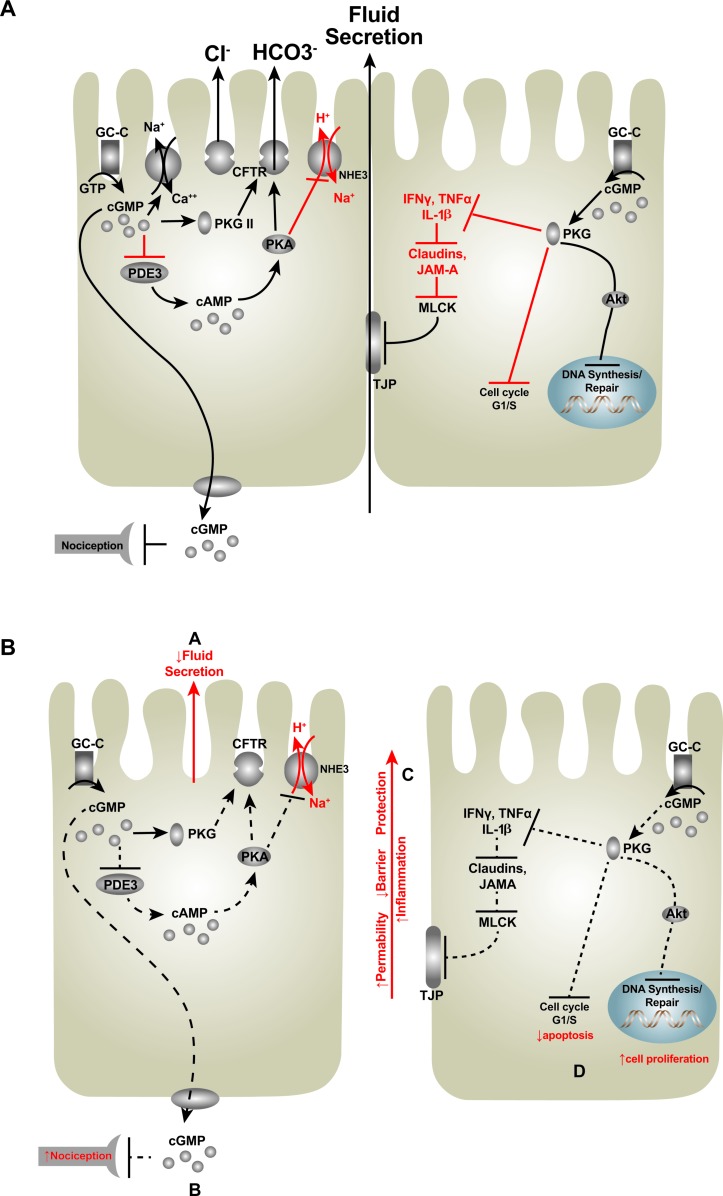Figure 4.
GC-C activation, intracellular effects. (A) The GC-C receptor is activated by both endogenous and exogenous ligands, which increase intracellular cGMP levels. The subsequent regulation of protein kinases, phosphodiesterases and ion channels modulates a number of downstream physiological mechanisms including fluid and electrolyte secretion, barrier function, inflammation and proliferation. (B) Dysregulation of this signalling pathway in turn produces epithelial dysfunction, which may contribute to chronic constipation, IBDs and intestinal tumourigenesis. CFTR, cystic fibrosis transmembrane conductance regulator; GC-C, guanylate cyclase-C; GTP, guanosine triphosphate; MLCK, myosin light chain kinase; PDE3, phosphodiesterase 3; NHE3, Na+/H+ exchanger-3; PKA, protein kinase A; PKG II, protein kinase G II; TJP, tight junction protein; TNFα, tumour necrosis factor alpha.

